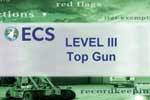Key Findings
The Europe additive manufacturing in aerospace & defense market is set to project a CAGR of 20.04% during the forecast period, 2023-2032. The European market is undergoing advancements in additively manufactured electronics embedded parts. In addition, embedded electronics, particularly for unmanned aerial vehicle (UAV) applications, are gaining momentum in Europe. This is backed by drone start-ups investing heavily in such technologies.
Market Insights
France, Poland, Spain, the United Kingdom, Belgium, Germany, Italy, and Rest of Europe are assessed for the Europe additive manufacturing in aerospace & defense market growth evaluation. In Germany, strict environmental measures and updated environmental frameworks like the Parish Agreement and sustainable development goals (SDGs) are predicted to increase highly rigid and lightweight carbon fiber use. Accordingly, Teijin Carbon Europe GmbH increased the production capacity of its chopped carbon fiber in June 2020.
Further, Premium AEROTEC, EOS, and Daimler collaborated on the NextGrenAm project in 2019 to develop a completely automated system to produce aluminum components for the aerospace and automotive industries. The pilot plant of the project entails machines for quality assurance, post-processing, and additive production. The plant also automates and integrates the interactions between most steps in the process.
Furthermore, MORPHO is an EU-funded project that aims to embed sensor technology into engine components. It enables cognitive capabilities to enhance operational availability and manufacturing processes without safety compromises. Such aspects boost market growth opportunities in the Europe additive manufacturing in aerospace & defense market.
Competitive Insights
Some of the major firms in the market include Aerojet Rocketdyne, Airbus SE, GE Aviation, etc.
Our report offerings include:
- Explore key findings of the overall market
- Strategic breakdown of market dynamics (Drivers, Restraints, Opportunities, Challenges)
- Market forecasts for a minimum of 9 years, along with 3 years of historical data for all segments, sub-segments, and regions
- Market Segmentation caters to a thorough assessment of key segments with their market estimations
- Geographical Analysis: Assessments of the mentioned regions and country-level segments with their market share
- Key analytics: Porter’s Five Forces Analysis, Vendor Landscape, Opportunity Matrix, Key Buying Criteria, etc.
- The competitive landscape is the theoretical explanation of the key companies based on factors, market share, etc.
- Company profiling: A detailed company overview, product/services offered, SCOT analysis, and recent strategic developments




